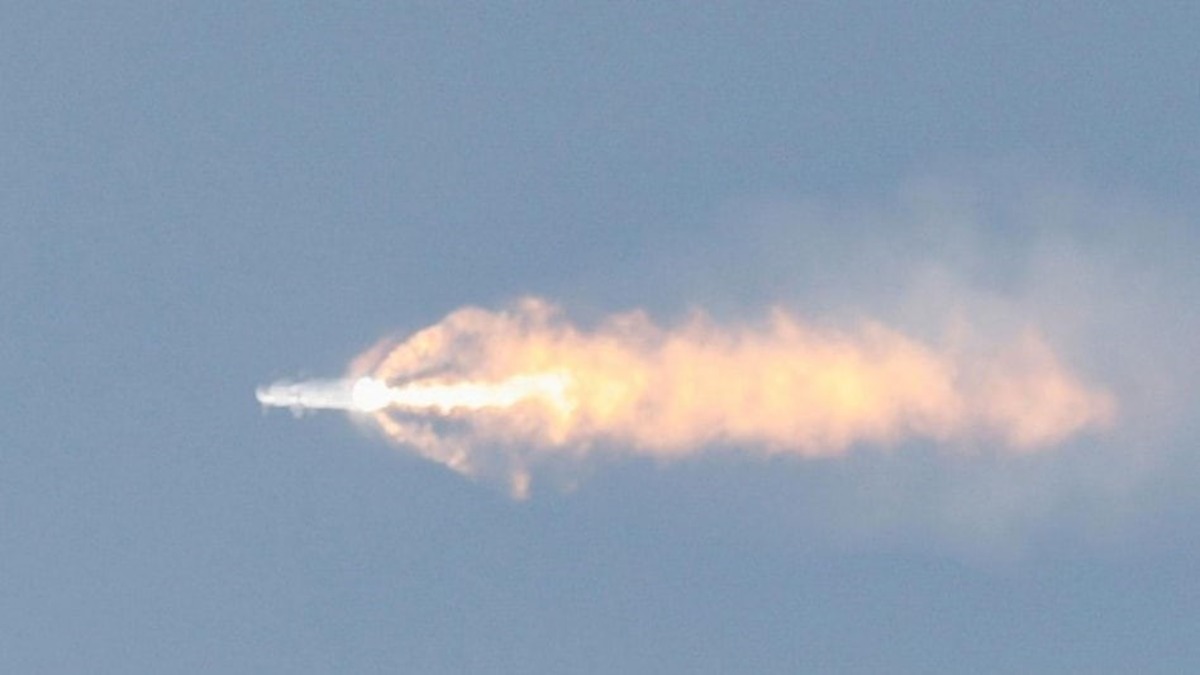Starship was a fully reusable transportation system designed to carry both crew and cargo to Earth orbit, the Moon, Mars, and beyond. It was the world’s most powerful launch vehicle ever developed, capable of carrying up to 150 metric tonnes fully reusable and 250 metric tonnes expendable.
Updated Apr 20, 2023, 8:25 PM IST
SpaceX’s Starship, the world’s biggest rocket system, exploded shortly after the launch from Starbase in Texas on Thursday. Elon Musk’s space firm said Starship experienced a rapid unscheduled disassembly before stage separation. “Teams will continue to review data and work toward our next flight test,” it said.
As if the flight test was not exciting enough, Starship experienced a rapid unscheduled disassembly before stage separation
— SpaceX (@SpaceX) April 20, 2023
Starship got off the launchpad in South Texas but did not achieve its goals – which was to reach the Earth’s orbit. A few minutes after the lift-off, some of the engines were out and the rocket appeared to be spinning.
The rocket system was scheduled to take off on Monday but the attempt was called off due to last minute problem with the pressurisation system in the booster. Later, SpaceX said a ‘pressurisation’ issue in the lower-stage Super Heavy booster was the reason for scrubbing the launch.
Congrats @SpaceX team on an exciting test launch of Starship!
Learned a lot for next test launch in a few months. pic.twitter.com/gswdFut1dK
— Elon Musk (@elonmusk) April 20, 2023
Starship was a fully reusable transportation system designed to carry both crew and cargo to Earth orbit, the Moon, Mars, and beyond. It was the world’s most powerful launch vehicle ever developed, capable of carrying up to 150 metric tonnes fully reusable and 250 metric tonnes expendable.
Both the lower-stage Super Heavy booster and the upper-stage Starship vessel were designed as reusable components, capable of flying back to Earth for soft landings. If successful, both parts would have ended their flight to space with crash landings at sea. The lower stage would have fallen into the Gulf of Mexico after separating from the upper stage, which would have come down in the Pacific Ocean after achieving nearly one full Earth orbit. But the rocket exploded above the Gulf of Mexico.
Ahead of the launch, SpaceX said its team had completed multiple sub-orbital flight tests of Starship’s upper stage from the launch site Starbase, successfully demonstrating an unprecedented approach to controlled flight. These flight tests helped validate the vehicle’s design, proving Starship can fly through the subsonic phase of entry before re-lighting its engines and flipping itself to a vertical configuration for landing.
In addition to the testing of Starship’s upper stage, the team had conducted numerous tests of the Super Heavy rocket, which included the increasingly complex static fires that led to a full-duration 31 Raptor engine test – the largest number of simultaneous rocket engine ignitions in history.
The SpaceX team had also constructed the world’s tallest rocket launch and catch tower. “At 146 meters, or nearly 500 feet tall, the launch and catch tower is designed to support vehicle integration, launch, and catch of the Super Heavy rocket booster. For the first flight test, the team will not attempt a vertical landing of Starship or a catch of the Super Heavy booster,” the space company had said.
Published on: Apr 20, 2023, 7:05 PM IST
